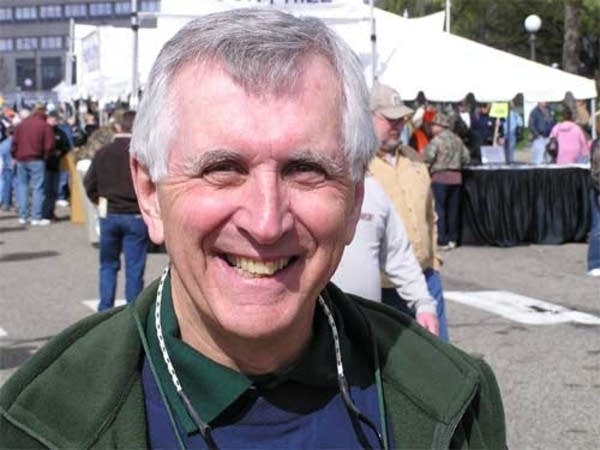Minnesota wildlife threatened by global warming
Go Deeper.
Create an account or log in to save stories.
Like this?
Thanks for liking this story! We have added it to a list of your favorite stories.

Dave Zentner is an avid outsdoorsman, an angler and duck hunter and past national president of the Izaak Walton League. Zentner says some of the fish most prized in cold northern waters could be disappearing as the waters warm.
"It is very sobering. And I think will affect lifestyles, economies and our recreation very, very dramatically--much more quickly than we thought," Zentner said.
Scientists agree the climate is getting warmer because of the gases humans have been pouring into the atmosphere--with carbon dioxide the leading contributor. Friday's Intergovernmental Panel Assessment Report spells out regional problems worldwide, from floods to droughts to soaring temperatures.

In northern Minnesota, Zentner says cold water fish species, like brook trout, are at risk. They need clear, cold, surface-runoff water to thrive. He says models already predict trouble for brown trout and some of Lake Superior's most prized fish.
Turn Up Your Support
MPR News helps you turn down the noise and build shared understanding. Turn up your support for this public resource and keep trusted journalism accessible to all.
The future's no better for ducks, according to W. Carter Johnson, an ecologist at South Dakota State University. Johnson says temperatures have already risen as much as three degrees in the prairie pothole region, which stretches from Iowa, through the Dakotas to Alberta, Canada.
The region's shallow wetlands are considered the nation's duck factory. But it's getting drier, with moisture falling more to the east, where Johnson says historic wetlands have been drained.
"The problem with that, of course, is that there's the loss of wetlands in the east provides no insurance for duck production that we've had in the past. The water will be there. The basins won't be there. In the west where we have the basins, we won't have the water," Johnson said.

Non-game species from owls to warblers face a similar fate, according to Maya Hamady, a non-game wildlife specialist with the Department of Natural Resources in Grand Rapids. Minnesota, she says, is a climatic crossroads--with boreal forest in the north, deciduous forest in the south and east, and prairie in the south and west.
Hamady says a warmer Minnesota climate could push northern boreal species right out of the state.
"We have great grey owl, northern hawk owl. We have Connecticut warbler--gray jay would be another one. Probably spruce grouse," says Hamady. "These are all species that are associated with the boreal forest."
Even large animals aren't exempt. There is a strong correlation between moose deaths and hot weather. Fond Du Lac Band tribal biologist Mark Schrage says climate might be the stressor that is putting moose over the edge.

"If we have longer, hotter summers, what I suspect is happening is that moose are not feeding like they're supposed to during the summer to put on fat for the winter. They're spending more time trying to cool off. They become stressed from that. They, I think, then become more vulnerable to other diseases or parasites," says Schrage.
What is frustrating is, it is fairly easy to predict that a warming climate will hurt wildlife. But the process is difficult to stop. Zoe Lipman, with the National Wildlife Federation in Ann Arbor, Michigan, says things are discouraging, but not yet hopeless.
"We are strongly encouraging folks to think about making the kinds of reductions to our global warming pollution emissions, necessary to stabilize these changes," says Lipman.
Lipman says people can replace inefficient lighting and appliances, they can make choices about what cars to drive and how to build homes and businesses. She says a goal to cut carbon emissions 80 percent by the year 2050 can be accomplished a little at a time.

"We are talking to people about it as two percent a year. And when you think about making a change that's two percent a year, that's reasonable for every family, for every business, for every state or nation," Lipman said.
In Minnesota, the Legislature is considering a bill to limit global warming emissions. The Global Warming Mitigation Act directs the MPCA to develop a plan to reduce greenhouse gas emissions at least 45 percent by the year 2025. The Senate Energy Committee takes up the act next Thursday.






